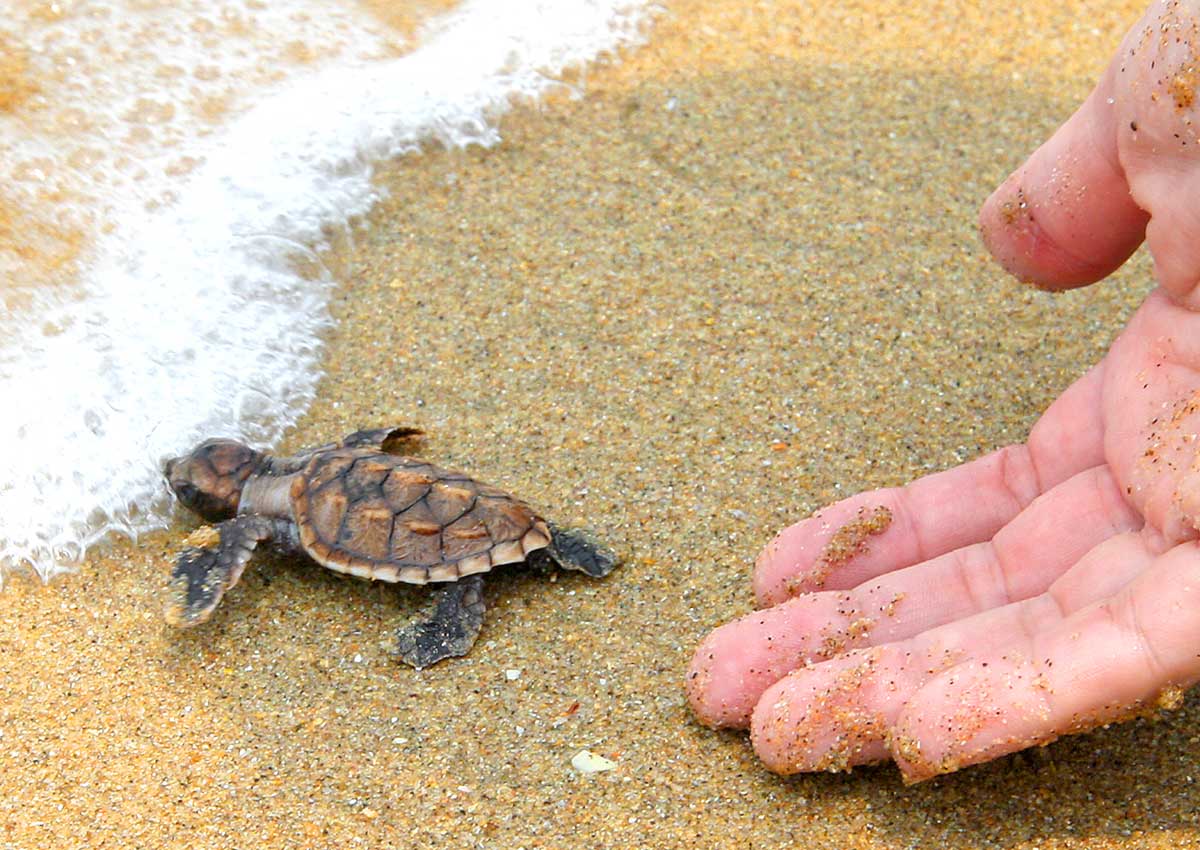Singapore’s sandy beaches are a popular place for people to enjoy a relaxing day off, but they are also vital to the survival of one of the world’s most fascinating creatures.
Throughout the year, endangered sea turtles make landfall on beaches like Changi and East Coast Park to lay their eggs.
The emerging baby turtles, however, risk being trampled on by people or disoriented by bright city lights.
More than 200 turtle hatchlings have been rescued from such predicaments since 2009, according to the Animal Concerns Research and Education Society (Acres).
Soon, turtle eggs will have a safe place to develop should they need protection, with plans being hatched for the country’s first sea turtle hatchery, supported by a $500,000 donation from HSBC Singapore.
The facility will be set up at the southern lagoon on Small Sisters’ Island by the end of next year, and will form an integral part of Singapore’s first marine park.
National University of Singapore’s (NUS) Mr N. Sivasothi, who has been working with Acres, the National Parks Board (NParks) and volunteers in turtle rescue and release since the 1990s, said: “This initiative will be very helpful in coordinating action and educating people who may not know we have turtles landing on our shores to lay eggs.”
Mr Stephen Beng, chairman of the marine conservation group of the Nature Society (Singapore), noted that the effort could facilitate the collection of reliable population data, especially in the face of rising sea temperatures.
Turtle beach sagas have been chronicled in Singapore for about 20 years.
Back in 1996, a group of colleagues having a barbecue at East Coast Park could not believe their eyes when a turtle came up on the beach and laid 100 eggs. One of them said she thought that “it was impossible for such things to happen in Singapore”.
In 2006, rollerbladers at East Coast Park raced to rescue about 80 hatchlings crawling haphazardly onto cycling tracks and falling into drains, disoriented by lit lampposts.
Since 2012, there have been 10 reported sightings of turtle hatchlings or adults laying eggs on the shores of East Coast Park and Changi Beach, said NParks, while Acres said it receives about six calls a year related to sea turtle sightings on Singapore’s beaches.
When a turtle sighting is reported, an NParks officer will assess the situation on site, and decisions are made based on sound science, in consultation with Acres and NUS where necessary, said Dr Karenne Tun, director of NParks’ National Biodiversity Centre.
“It is best to leave the eggs in the natural habitat that the turtle has chosen,” said Acres deputy chief executive Anbarasi Boopal.
Eggs are moved only when there are risks such as poaching, predation, pollution or flooding and the risks cannot be mitigated on site.
Ms Boopal added that Acres would look at getting hands-on training from other hatcheries and turtle rehabilitation centres in the region, and adapt it to Singapore’s context.
Turtles remain under threat in the region despite the presence of more than 10 sea turtle sanctuaries and hatcheries in Malaysia and Indonesia.
Their eggs are popular as a delicacy in Malaysia, with a study finding that more than 400,000 eggs were traded in the state of Terengganu in 2007. Turtle eggs were sold in Singapore many years ago before it became illegal to harvest them.
With the new hatchery, there will be one more safe refuge where they can develop close to their natural environment.
Mr Beng said that the design of the hatchery, which has not been finalised, should include a buffer zone of native vegetation and reduce light pollution, which can be fatal to nesting females and their young.
Besides hatching eggs and studying local sea turtle populations, the facility will conduct outreach programmes.
HSBC staff will also be involved in habitat maintenance and possibly the collection of eggs.
Said HSBC Singapore chief executive Guy Harvey-Samuel: “Building a sustainable environment requires public and private sectors, NGOs and communities to work together to deliver lasting positive changes.”
Mr Beng stressed that outreach activities must be managed carefully to minimise disturbance to the turtles, giving the example of one overseas nesting site where the nesting population crashed following swelling tourist numbers.
“The hatchery must remain a place for the benefit of the sea turtle and not one for human entertainment.”
Turtle haven
Singapore is in a region considered by the World Wildlife Fund to be one of the world’s most important for sea turtles, as it is next to Indonesia whose sprawling archipelagoes host all but one of the world’s seven species of these reptiles.
Five turtle species have been recorded in the waters around Singapore, although only two are regulars here – the green and the hawksbill.
The green turtle is listed on the International Union for Conservation of Nature’s Red List as endangered, while the hawksbill is critically endangered.
Hawksbill populations have suffered from centuries of hunting for their beautiful shells, which are used to make ornaments.
The three other species that have been seen in Singapore are the leatherback, loggerhead and Olive Ridley turtles.
Mr Stephen Beng, chairman of the marine conservation group of the Nature Society (Singapore), said that sea turtles demonstrate the interconnectivity of marine and coastal ecosystems.
“The sea turtle relies on our coral reefs, seagrasses and mangroves for food and shelter, and needs our sandy beaches for reproduction,” he said.
“By conserving our sea turtles and studying them, other marine species and habitats may benefit as well.”
In 2010, Underwater World Singapore released 18 hawksbill turtles, eight of them outfitted with satellite tracking devices, in a study of migratory behaviour in collaboration with organisations in Japan and the United States.
One of them travelled more than 2,600km in 83 days, reaching waters near the Philippines.
linyc@sph.com.sg

This article was first published on May 29, 2016.
Get a copy of The Straits Times or go to straitstimes.com for more stories.






